Publications
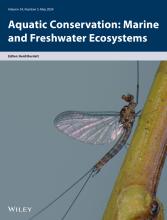
|
V V Binoy Insights on the distribution, catch and release and public sentiment towards recreational angling of mahseers—A study of YouTube videos from India https://onlinelibrary.wiley.com/doi/abs/10.1002/aqc.4176 Co-Authored with Prantik Das, Aquatic Conservation: Marine and Freshwater Ecosystems This paper explores the potential of social media data to develop a complementary tool for monitoring and managing recreational angling and conserving megafish mahseer |
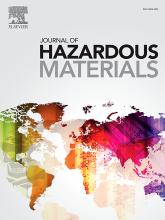
|
Gufran Beig Quantification and assessment of hazardous mercury emission from industrial process and other unattended sectors in India: A step towards mitigation https://www.sciencedirect.com/science/article/abs/pii/S0304389424006824?via%3Dihub= Co-Authored with Sahu, S.K., M. Mishra, A. Mishra, P. Mangaraj. Journal of Hazardous Materials 470:134103, 2024 Hazardous pollutants like Mercury (Hg) have emerged as a pressing challenge in recent times where the expanding industrial sector is regarded as the major source in developing country India. In this study, we are trying to identify all possible industrial sectors at district level to quantify Hg emission load across India for the year 2019 using IPCC methodology where the country-specific technological emission factors are used. We have included 5 major sectors out of which emission from coal combustion in thermal power plants accounts for 186.5 t/yr of Hg emission followed by non-ferrous metal production (88.3 t/yr), captive power plants (65.5 t/yr) and fly ash generation from various manufacturing industries (45.9 t/yr). A total of 459.4 t/yr of Hg is released into the ecosystem in 2019 with an uncertainty of ± 48%. This study also estimated that about 233 million people living in and around 10 km periphery of major industrial zones with as many as 17 million people residing near the 10 major hotspots are susceptible to hazardous Hg emissions directly or indirectly. This information would be quite useful in formulating future Hg emission control strategies in India. |
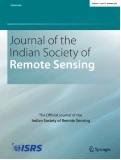
|
Vinay Kumar Dadhwal Forest Biomass Assessment Using Multisource Earth Observation Data: Techniques, Data Sets and Applications https://link.springer.com/article/10.1007/s12524-024-01868-4 Co-Authored with Subrata Nandy. Journal of the Indian Society of Remote Sensing, 52(4): 703-710 |
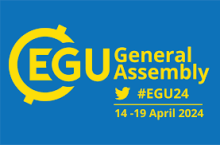
|
Ramya Bala Prabhakaran DST-INSPIRE Faculty Fellow, School of Natural Sciences and Engineering Reconstructing human-fire-vegetation inter-relationships in a protected dry tropical forest, Mudumalai National Park. Southern India https://cms.nias.res.in/sites/default/filesefs/2025-04/EGU24-14748-print.pdf Prabhakaran, R. B., & Kumar, N. (2024). Reconstructing human-fire-vegetation inter-relationships in a protected dry tropical forest Mudumalai National Park. Southern India. Vienna, Austria . |

|
Vinay Kumar Dadhwal Non-Destructive Allometric Modeling for Tree Volume Estimation in Tropical Dry Deciduous Forests of India Using Terrestrial Laser Scanner https://link.springer.com/article/10.1007/s12524-022-01664-y Co-Authored with Suraj Reddy Rodda, Rama Rao Nidamanuri and et.al. Journal of Indian Society of Remote Sensing, 52(4):825-839 |
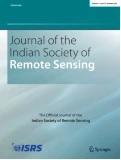
|
Vinay Kumar Dadhwal Age-Based Stratification to Estimate Aboveground Biomass (AGB) and Carbon Stocks of Rubber Plantations in Tripura https://link.springer.com/article/10.1007/s12524-023-01751-8 Co-Authored with Pasha SV. Journal of the Indian Society of Remote Sensing, 52(4):711-721 |

|
Vinay Kumar Dadhwal Validation of ESA-CCI Forest Biomass Products over India: Methodological and Data Challenges and Results https://link.springer.com/article/10.1007/s12524-023-01741-w Co-Authored with Y. Bhat, M. K. Kripa. Journal of the Indian Society of Remote Sensing 52(4):931-942 |

|
Gufran Beig Impact of lockdown emission scenario on fine particulate matters (PM1) and its comparison with PM2.5 within Indian megacities https://link.springer.com/article/10.1007/s11069-024-06568-3 Co-Authored with Bhagavathiammal, G J, N. Korhale, S. Singh and B.S. Murthy. Natural Hazards, 2024 We hereby present the variability of fine particles (PM1 ≤ 1 micron) that has not yet been investigated under the influence of COVID-19-induced lockdown in three major cities of different climatic zones in India. We unfold the baseline level of PM1, a level to which the population is chronically exposed and extremely critical for epidemiologists for fixing health markers. This has been achieved using the saturation point methodology under fair weather conditions. The baseline level of PM1 for Delhi and Mumbai is found to be 13 µg m− 3 and 9 µg m− 3, respectively. The processes leading to a significantly higher decline in the level of PM1 as compared to coarser particles (PM2.5) are discussed. The varying magnitude of the declining trends in PM1 is found to be linked to the intensity of residential emissions, which vary from one city to another and was exempted during lockdown. Our findings are critical in understanding the dominant role played by different sources of PM1 in framing effective health risk management policies. |
